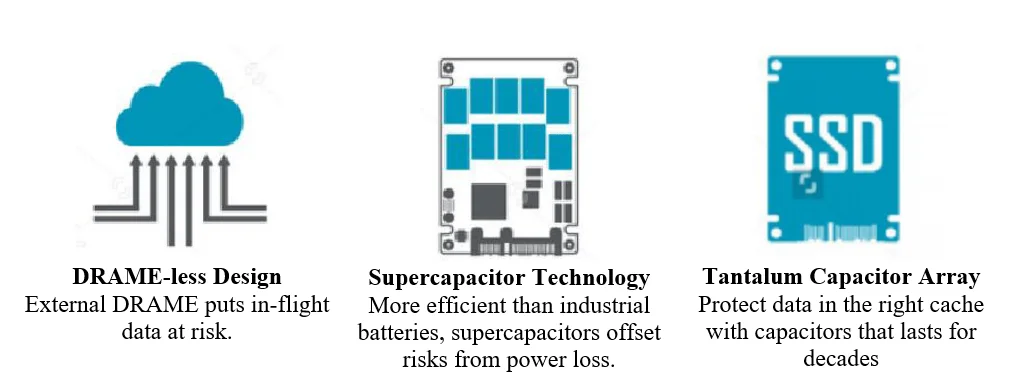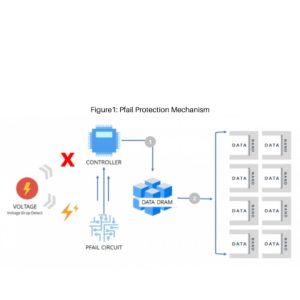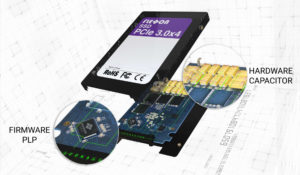The modern world is heavily data-oriented and is reliant on technology that provides easy, fast and secure access to high volumes of data. In the past, hard disk drives (HDDs) were relied on for storage. Increasingly, Solid-State Drives (SSDs) are used. They provide much faster access than HDDs and, as they have no moving parts, reliability is much higher.
Solid state memory (SSM) is either volatile or non-volatile memory (NVM). Of these, the former is used extensively in compute-intensive applications. For example, dynamic RAM (DRAM) is a popular volatile memory type because it is a relatively low-cost way of giving a system ‘workspace’. However, the ‘dynamic’ aspect refers to how it needs to be constantly refreshed, a few times every second. If power is lost before the ‘work’ can be moved to NVM then all is lost.
What Is Power Loss Protection?
Power Loss Protection or PLP keeps the system stable through support from the controller firmware and allows the data in the DRAM to be flushed to NVM (NAND Flash) which can store data without a continuous power supply. The additional emergency power support is gathered through capacitors from the PCBA power backup to complete the action.
Normal System Shutdown Vs. Sudden Power Failure
During a normal system shutdown, the SSD receives a ‘Standby Immediate Command’ from the host ATA driver. It alerts the SSD that the system is shutting down and gives it enough time to flush its cache buffers from volatile storage to the NVM and update the system’s mapping table.
However, during a sudden power failure or voltage drop, the ‘Standby Immediate Command’ might not be issued and all unwritten (to NVM) information will be lost or become corrupted.
An SSD with PLP contains a DRAM cache before flushing data to the NVM for safekeeping. It helps ensure successful data recovery when power returns. The data is stored safely before power disappears from the volatile memory and the mapping tables are kept up to date.
Prevent Data Loss with Flexxon SSDs
Not all solid state drives are equipped with PLP. Many high-performance drives can’t fully protect the stored data in the event of a power failure. That’s where Flexxon SSDs come to the rescue.

As mentioned, a sudden power failure may lead to the DRAM losing the data temporarily stored there. A hold-up capacitor gives the system time to flush data from DRAM to NAND Flash.
Technology Efficiency of Flexxon SSD
Flexxon designs SSD with a Pfail protection circuit. It is charged by and monitors the host power. If a drop in power is detected, the Pfail circuit powers the controller and provides a signal to trigger an immediate copy of data from DRAM to the NAND flash memory..

DRAMs reliance on external power can be the reason for data loss during sudden power failure. Flexxon Power Loss Protection provides a time window to quickly secure data by flushing it from DRAM to NAND memory.
It enables power loss solutions that power up the DRAM for temporary data transfer to NAND meaning you no longer have to worry about power losses.
Need to secure your data against unexpected power shutdowns? Your wait is over – Flexxon’s SSD Power Loss protection (PLP) offers the solution.
For more information speak to one of our Sales Engineers who are here to guide you on choosing the right SSD.

